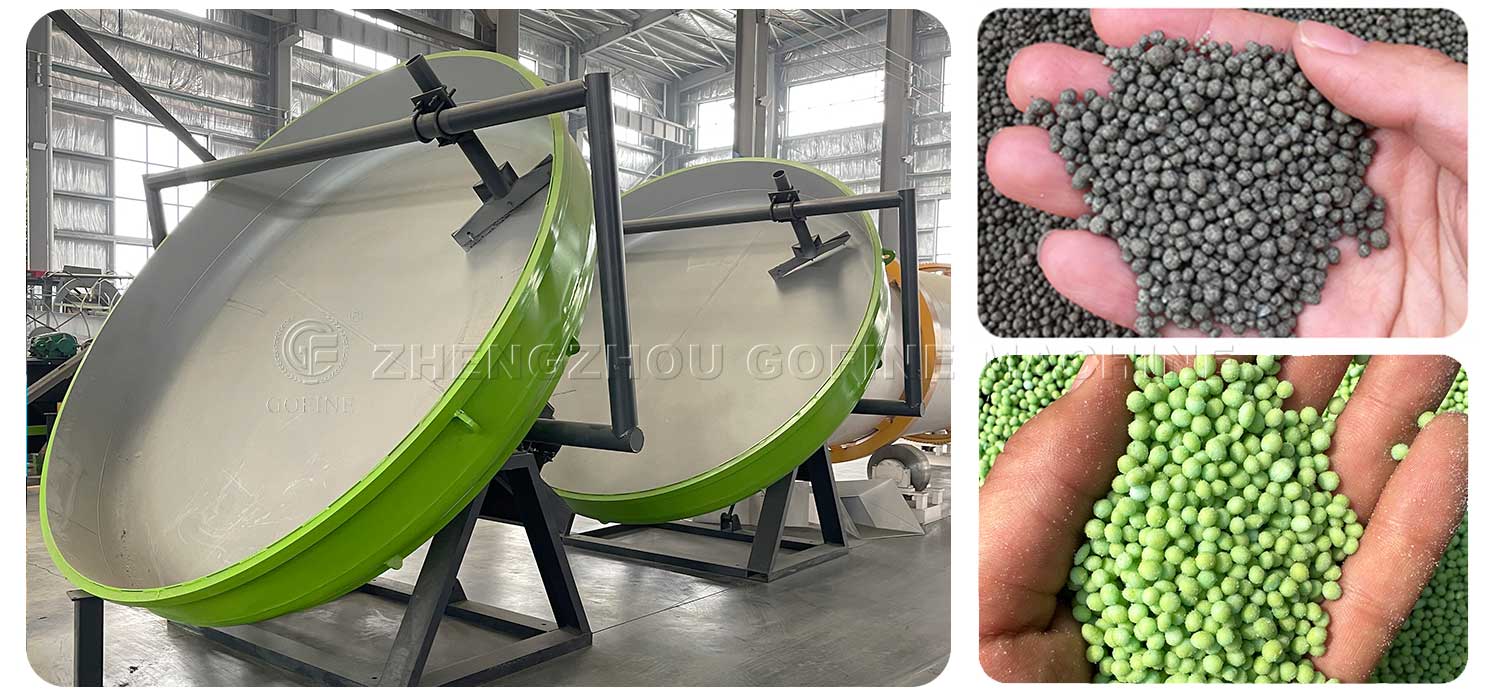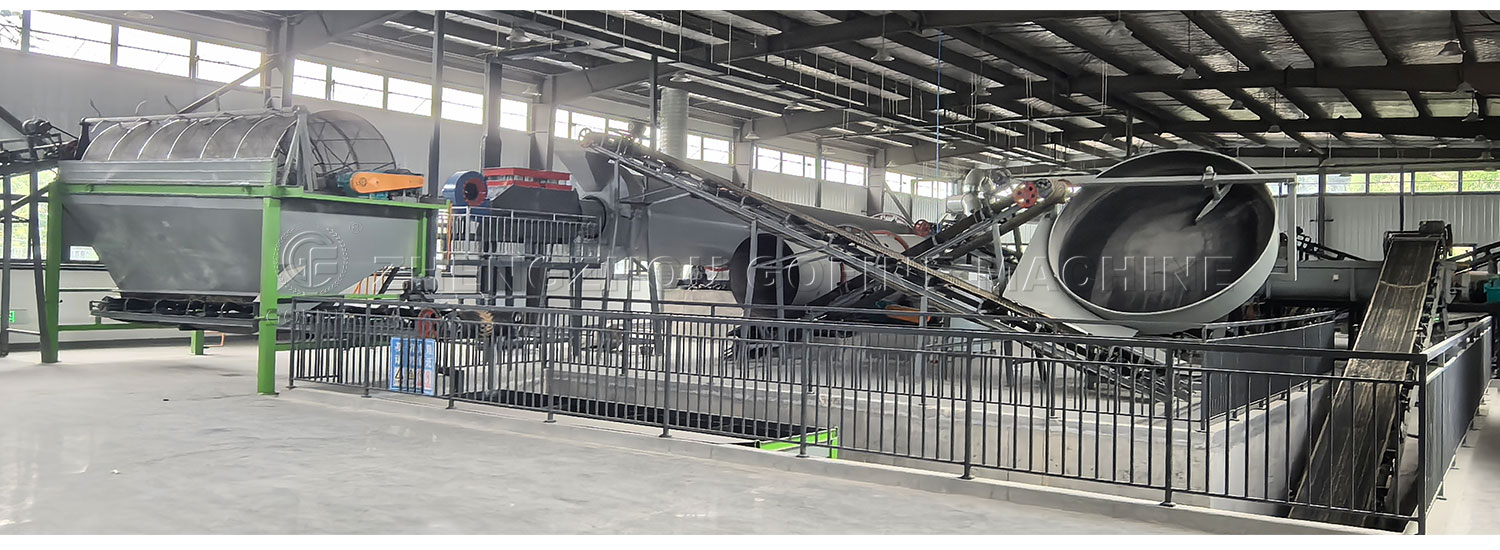
How Does a Pan Granulator Work? The Key to Efficient Fertilizer Production
2025-08-21If you're in the fertilizer production business, you understand the critical importance of efficient granulation. The process of turning fine, dusty powders into uniform, easy-to-handle pellets can make or break your product's quality and your operation's profitability. Among the various granulation equipment options, the pan granulator stands out for its simplicity, reliability, and effectiveness.
This article will explore the inner workings of a pan granulator, its key advantages, and why it might be the perfect solution for your fertilizer production line.
What is a Pan Granulator?
A pan granulator, also known as a granulation pan or disc granulator, is a robust and versatile machine used primarily in the fertilizer and chemical industries to form pellets from powdered materials. Its defining feature is a large, inclined, rotating pan that gently tumbles the feed material, causing the fines to adhere together and form uniform granules.
Its simple yet effective design has made it a popular choice for both small-scale and large-scale production facilities looking for a cost-effective granulation solution.
The Working Principle of a Pan Granulator: A Step-by-Step Guide
The operation of a pan granulator is a continuous process that leverages centrifugal force, gravity, and the natural adhesion properties of moistened materials. Here’s a step-by-step breakdown:
1. Feed Introduction: The process begins when a pre-mixed blend of fine powdered raw materials is fed onto the rotating pan. This feed is often pre-conditioned with a liquid binder (such as water or a nutrient-rich slurry) to initiate the agglomeration process.
2. The Tumbling Action: As the inclined pan rotates, the material is carried upward by the rotation before eventually tumbling back down due to gravity. This continuous cascading and rolling motion is the heart of the granulation process.
3. Nucleation and Growth: The fine particles begin to collide and adhere to each other, forming tiny seed pellets (nucleation). These seeds continue to roll in the pan, and successive layers of fines coat their surface, causing the pellets to grow in size in a process known as layering.
4. Spheroidizing and Polishing: The constant tumbling action rounds off the pellets, compacts them, and polishes their surface, resulting in strong, spherical, and uniform granules.
5. Discharge: Once the pellets reach the desired size, they overcome the centrifugal force and are discharged over the rim of the pan. The inclination angle of the pan and its rotation speed can be adjusted to control the retention time and, consequently, the final pellet size.
6. A key feature that ensures consistent operation is the automatic cleaning system often found beneath the screen or pan, which prevents material from blocking the mesh and maintains efficient screening and granulation.

Key Benefits of a Pan Granulator for Your Business
Why should you consider using a pan granulator in your operation? The advantages are clear:
High granulation efficiency: The design achieves high pellet formation rates (typically above 95%), ensuring maximum raw material yield and minimizing recycling loads.
Uniform product size: The tumbling action produces strong, spherical, and consistent pellets, which is critical for product appearance, market value, and practical application.
Low energy consumption: Compared to other granulation methods like extrusion or compaction, pan granulators require relatively low operating power, reducing your operating costs.
Flexibility and adjustability: Operators can easily control pellet size by adjusting the pan granulator's angle, rotation speed, and feed rate. This allows for quick product switching to meet varying market demands.
Simple construction and easy maintenance: Compared to complex granulators, pan granulators have fewer moving parts, resulting in reliable performance and simple maintenance, minimizing downtime.
Enclosed Design Option: Pan pellet mills can be fully enclosed to prevent dust and environmental contamination, which is critical for worker safety and meeting environmental regulations.
Ideal Applications: Where Pan Granulators Shine
Pan granulators are incredibly versatile and are successfully used across various industries:
Organic Fertilizer Production: Perfect for granulating compost, manure, and other organic wastes into valuable soil amendments.
Compound Fertilizer Production: Effectively combines and granulates NPK materials and other nutrient blends.
Specific Material Processing: Well-suited for handling materials with strong absorbency, high viscosity, and those prone to clogging or sticking to screens, such as urea.
Chemical, Pharmaceutical, and Mining Industries: Used for agglomerating a wide range of chemical and mineral powders.
Is a Pan Granulator Right for Your Production Line?
Choosing the right granulation equipment depends on your specific materials, desired capacity, and product specifications. A pan granulator is an excellent choice if:
You prioritize high-quality, spherical pellets.
You need operational flexibility for different products.
Energy efficiency and ease of maintenance are important to you.
You are processing materials that are moist, fine, and agglomerate well under tumbling motion.

Get the most out of your pan granulator.
To ensure optimal performance, consider raw material characteristics (moisture content, particle size, composition) and operating parameters (pan speed, tilt angle, feed rate, binder spraying position) during setup and operation.
We'll provide you with the optimal solution.
Ready to discover how a pan granulator can revolutionize your process?
Contact us today for a detailed proposal!
